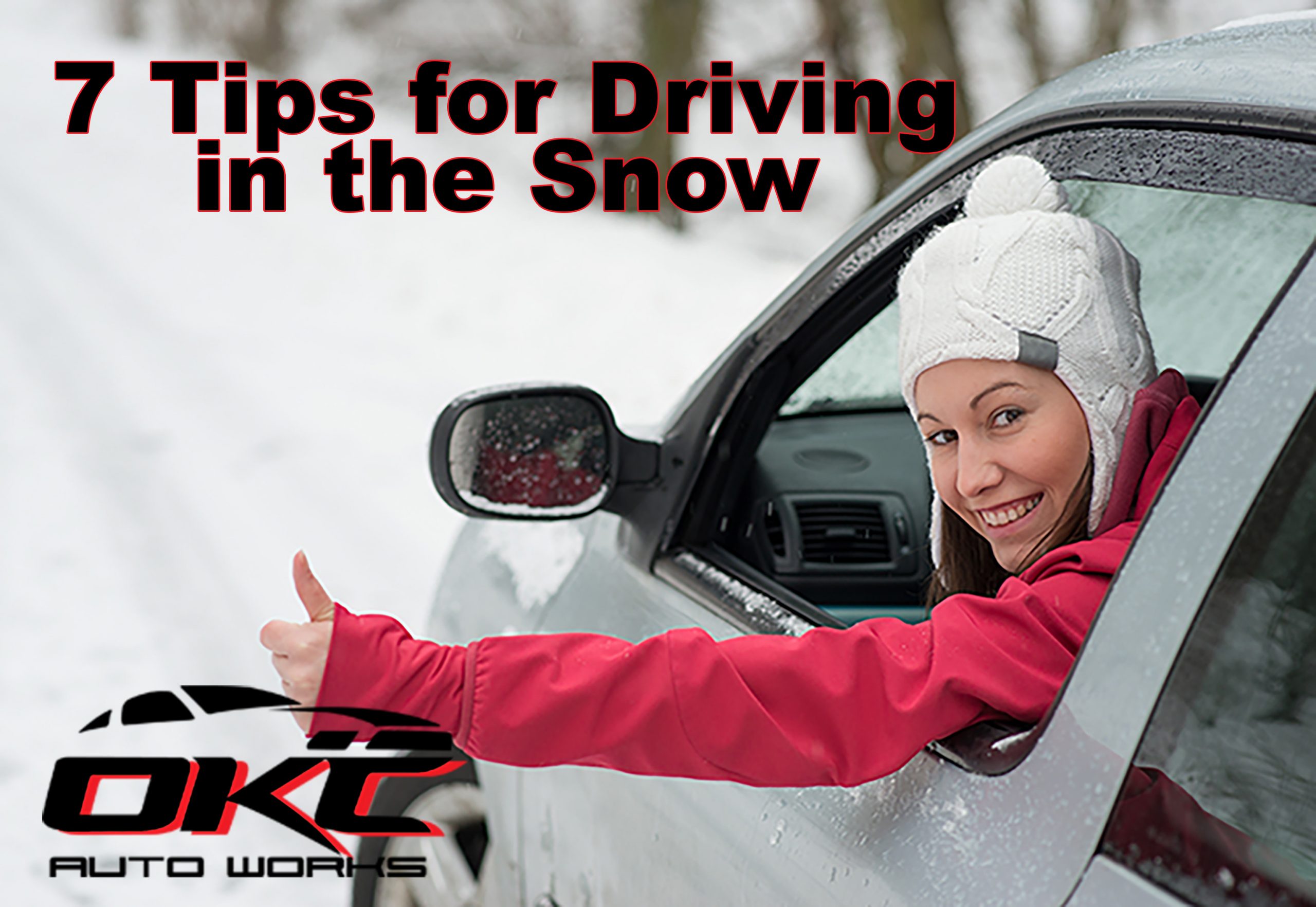We are officially on day three of our “freak winter snowstorm” here in Oklahoma. If we are going by past behaviors, one could conclude that today is the day people will truly start venturing out, even if they do not have to go to work due to inclement weather. Today is the day those of us who have been sitting at home staying warm and avoiding the mess is about to go stir crazy. It is, for this reason, we felt compelled to give some instruction on how to safely navigate this weather while you are driving. After all, with body shops being so full that they are scheduling out 2 and 3 months in advance on repairs, this is NOT the time you want to be in a car accident. This list is by far not exhaustive, as is a condensed list we comprised from a much longer article by Car and Driver entitled “How to drive in the snow”.
Please read 7 tips for driving in the snow before venturing out on the roads today, your safety may depend on it:
1. Drive Super Smoothly.
Jerky movements when you have low traction and slippery conditions are not a good idea. The key to safe driving in the snow is being smooth with the steering wheel, accelerator, and brakes. Pretend you are driving with a cup of scalding hot coffee in your lap that you do not want to spill to help ensure that your movements are deliberate, gentle, and gradual.
2. Look Far Ahead.
The more treacherous the road is, the farther ahead you need to be looking on the road. By seeing things ahead of you at a distance, you have more time to anticipate and react. Slow way down for turns and start slowing down to stop well before you get to the stop sign. Allow double the stopping distance when the road is wet, triple on snow, and even more on ice. Driving carefully and safely takes extra concentration (so stay off the phone and turn the radio down, if necessary, as your life and others may depend on it.
3. Look Where You Want to Go!
If you feel your car beginning to skid look where you want to go, as opposed to looking where the car is heading. You see, you almost always end up where you are looking, at least this is the premise race car drivers swear by as to why they recover from skids so easily and get themselves quickly back into a race. Either way, you have to deal with the skids that come with driving in snow and ice if you plan to be on the road. The real trick is to remain calm, ease off the gas, and don’t stomp on the brake.
4. Beware All-Wheel Drive
Often during snow and ice, the first non-commercial vehicles you see out and about are all-wheel drive or four-wheel drive ones! Because these types of vehicles distribute power to all four wheels it does help enable slip-free acceleration, which can make it feel as if you have much more traction than you do. Don’t be lulled into a false sense of security though, 4-wheel drive does not improve your vehicle’s ability to turn or stop in snowy conditions. If you are driving such a vehicle, you still need to alter your driving to match with the current weather conditions both for your safety as well as the safety of others you are sharing the road with.
5. Winter Tires or Chains
For driving in the snow we recommend snow tires or chains, but we also know that in Oklahoma with as little powder as we get, it’s not realistic to have snow tires installed every winter season. But as the saying goes, if you’ve got it, use it.
6. Read the Road
When venturing out and driving in the snow, knowing your driving conditions is crucial and for this reason, you should read the road. Is the surface shiny or dull? Is there a uniform coating of powder, or bare spots interspersed with snow in the shade? Is the temperature cold enough to ensure crunchy, light, snow, or is it warm enough to create a slushy mess? Shiny is bad as that means either ice or water is present. Shady spots are deceptive since dry pavement ahead of them can lead to a false sense of security, so be keen on the possibility of ice patches that could be present. Additionally, dry snow is way better than slushy slop when it comes to traction and driving. Dry snow offers some traction, whereas slush behaves more like deep water, with the tires riding up on top of it.
7. Plan Ahead
Seriously probably one of the most important things to do when it comes to driving in inclement weather conditions and driving in the snow is the gift of time and proper planning. Give yourself plenty of time to get where you need to go and make sure to put supplies in your car that can be helpful in case of emergencies. Things you might consider putting in your vehicle before you leave the house include a bag of salt or kitty litter, a tow strap, a snow shovel, and an ice-scraper. You might want to include a warm blanket or two and a backup phone charger as well in case you find yourself stranded at some point.
We hope that you have found this article helpful. And if you don’t wish to go out in this weather but want to continue staying holed up in your nice warm house, you might want to check out a past article we published on safety tips for dealing with ice storms. Please stay warm and safe this winter, and know that if you need help getting your car prepared for colder weather or repaired from the damages of driving in such, OKC Auto Works is here to help!

